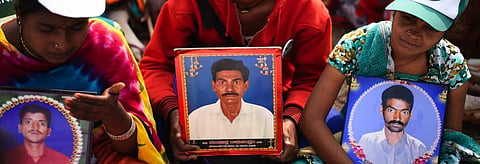

The incumbent Bharatiya Janata Party (BJP)-led National Democratic Alliance (NDA) has beaten all odds to win the 2019 Lok Sabha elections. Prominent among these odds was the agrarian crisis that rural India is currently in the throes of.
Since 2014, the country has suffered two major droughts and 850-odd incidents of crop losses due to freak weather events. Finally, in 2017 and 2018, when there were bumper harvests, the prices crashed.
With nearly 250 districts affected by drought, farmers have sown less this winter. This means that neither does a farmer have the base capital to invest, nor does s/he want to risk going back to agriculture.
In the run-up to this election, India’s wholesale and retail inflations were at 3.8 and 2.2 per cent respectively. It spoilt the mood in the farm sector, with farmers holding protests to seek a fair price for their produce. From wheat to potatoes and onions, they dumped their harvest on the road as market rates dipped to a low that could barely recover 30 per cent of their investment.
Data since July 2018 shows the inflation rate of primary food items has plummeted below zero. This deflation of prices in the wholesale market means that farmers are not making any profit.
Last December, the wholesale price index (WPI) for food components was -0.1 per cent. In July last year, it was -3.3 per cent, in August -1.4 per cent, in September -0.2 per cent, in October -4 per cent and in November -2.1 per cent. The last time the WPI for primary food articles showed negative growth was in the year 1990. It clearly shows a collapse of farm income which led to the rural crisis.
Interestingly, these were the issues which caused the poll debacle of BJP governments in prominent agrarian states like Madhya Pradesh, Chhattisgarh and Rajasthan in November 2018. But it has not worked in the Lok Sabha Polls of 2019.
In fact, the farm crisis did not become an electoral issue this time. The main opposition party, the Congress promised to provide a cash assistance of Rs 72,000 per year to poor households but it failed to resonate with the voters.
Indeed, the voting pattern of rural voters this time looks very odd. They have chosen the very leaders who have not lived up to their poll promises.
Maharashtra’s Marathwada region, North Karnataka, Gujarat, Bihar and Jharkhand are reeling under extreme drought. But this drought has not become a poll issue. The current trends of winning show rural voters have not bothered about the crisis they are facing in this election.
There are record sugarcane dues of Rs 24,000 crore across the country, especially in Maharashtra, Uttar Pradesh and Karnataka. These are the highest-ever cane dues in the country. The incumbent BJP MPs seem to be leading in all these seats even as the crisis persists.
Raju Shetty of Swabhimani Shetkari Paksha, a grassroots farmer leader, is trailing by more than one lakh votes from Hatkanangale constituency in western Maharashtra. He was the sitting Member of Parliament (MP), who aggressively fought for dues payments of sugarcane growers in Maharashtra.
Another hot spot of farmers’ movement in Madhya Pradesh was the Mandsaur constituency where five farmers were killed in 2017 during a protest for better prices of farm produce.
BJP leader Sudheer Gupta, who is also the sitting MP, is leading by 3.5 lakh votes on this seat, proving there is no anger against him.